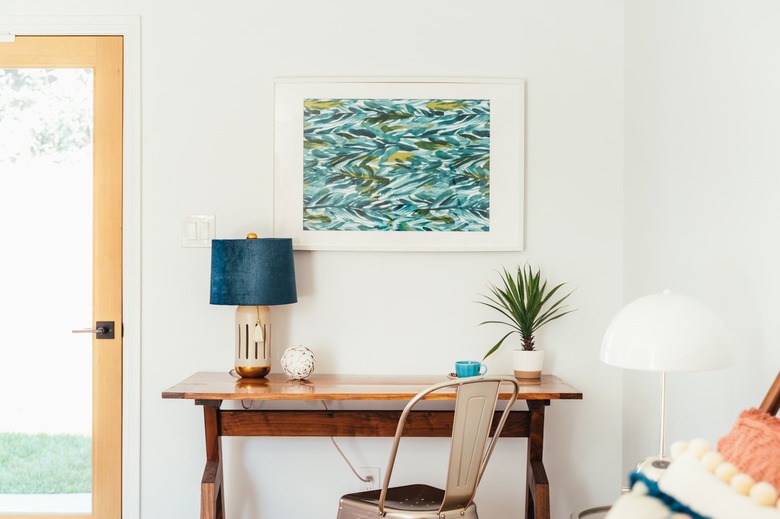7 Home Office Trends That Are Outdated, According To Designers
Before the pandemic, home offices were often approached as extra spaces or afterthoughts. But as remote work became the norm, offices have evolved into central features of the home. In turn, there's been a collective push toward creating more intentional workspaces that promote productivity and focus. People are also ditching outdated home office trends and giving their spaces much-needed makeovers.
Sound familiar? Ahead, learn about the workspace trends that are behind the times, according to interior designers.
1. Executive Desks
An executive desk is a large, wide desk typically seen in traditional office settings. And according to Sharon Falcher and Sherica Maynard, designers and founders of Interior Design by S&S, the piece is on its way out. "[The executive desk] was very much a thing in the '90s and early 2000s," Falcher and Maynard tell Hunker. "[But nowadays], less people are seeking the big three-sided executive look. Our clients are seeking more writing desks, which have a smaller profile."
2. Traditional Corkboards
Like executive desks, organizational corkboards were common in the '90s and early 2000s. "These are great organizational tools, but people are going more digital," Falcher and Maynard tell Hunker. "No need to have a board stacked with to-do lists or reminders." Still want to display a corkboard? Consider using it as more of a decorative piece, like our wavy corkboard project.
3. Physical Filing Systems
Storage systems like file cabinets (or piles of folders) have seen better days. "Thanks to cloud storage, we no longer need [a lot] of physical file storage for endless stacks of paperwork and documents," says Mary Maloney, interior designer and owner of Bee's Knees Interior Design. "By eliminating unattractive file cabinets, we now have more room and freedom to get creative."
4. Typography Art
According to Kara Thomas, interior designer and founder of Studio KT, typography art (which is abundant on platforms like Etsy and Pinterest) is outdated. "I'm sure most of us appreciate words of encouragement to keep us motivated throughout our workday, but the look is dead," Thomas tells Hunker. "Try photography or abstract art instead."
5. Generic, Business-Like Spaces
Long gone are the days of basic, generic home offices. "Artwork, plants, and decor are [being] incorporated into the home office more," shares Linda Hayslett, designer and founder of LH.Designs. "People don't want to just have have their office supplies to look at; they want to see [interesting] items, inspirational pieces of art, and [lit] candles to get them motivated and productive in their workflow." The uptick in video calls has also contributed to the trend, she adds, as people's home and work environments are now visible to their peers.
6. Separated Home Offices
With remote work on the rise, people are shifting away from the idea that a home office needs to be a separate area. "The home office used to have its own room or space away from everything in the home," Hayslett says. But today, people are incorporating it into existing spaces. Case in point: "I've put built-in desks in the family room and cute office spaces in primary bedrooms," shares Hayslett.
7. Non-Ergonomic Desk Chairs
"With the work-from-home order, I think many of us learned that [an attractive] dining chair looks great but is extremely uncomfortable after sitting down for long periods of time," says Thomas. This has prompted folks to invest in more ergonomically friendly chairs for a healthier, less painful work environment.
